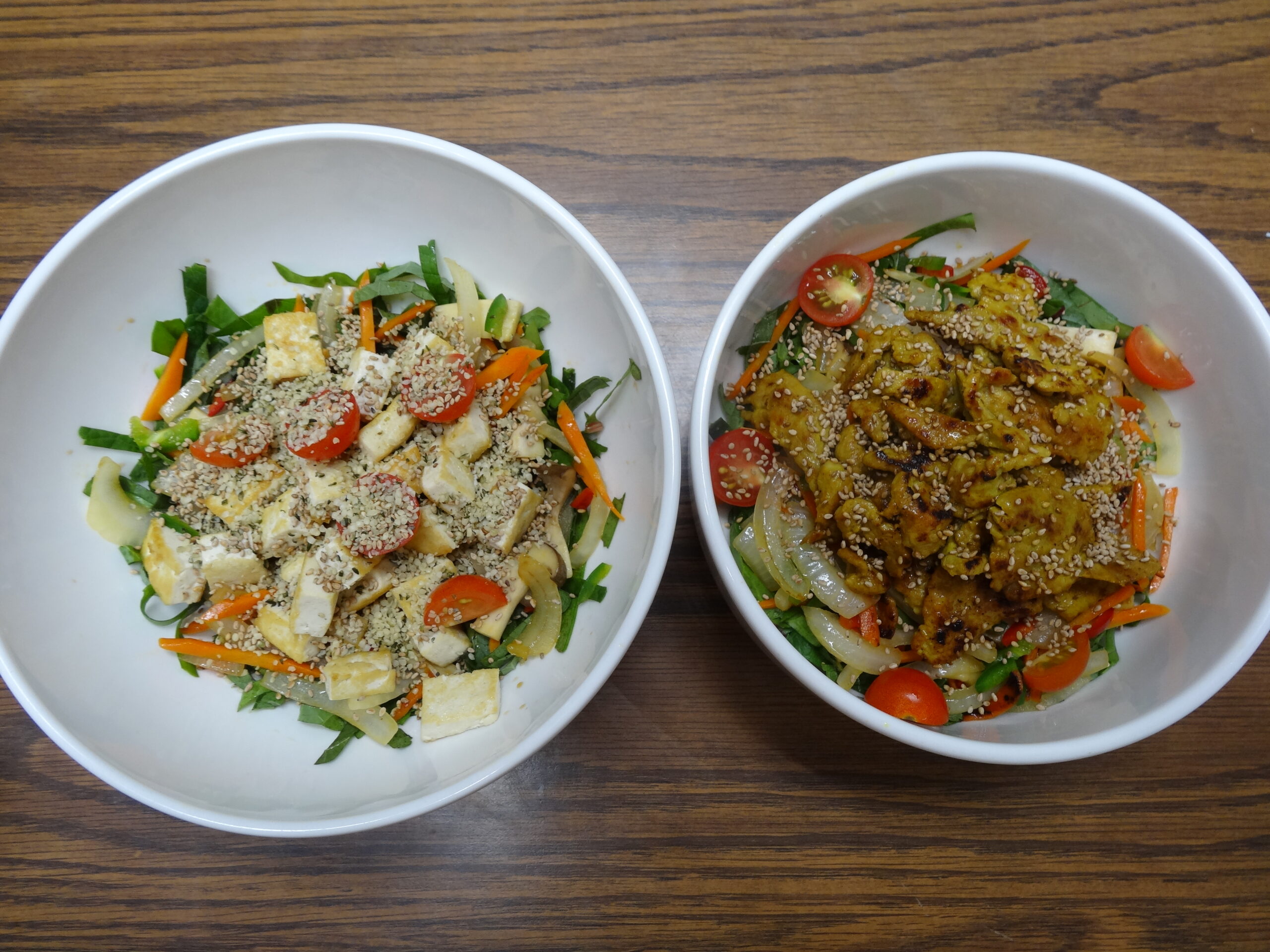
- This bibimbap is made by placing fresh raw vegetables at the bottom, followed by sauteed vegetables, and topped with soy -marinated pork bulgogi, which is then mixed together.(Gluten Free)
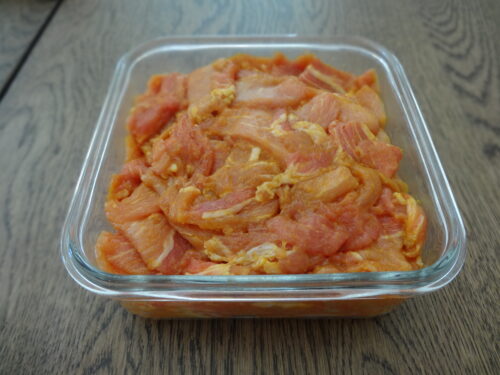
- I sliced 800g of pork neck thinly.The reason for preparing a large amount of meat is that I plan to use it for 3-4 different dishes over the next few days.
- Red wine 3T (Today, I only have red wine at home.)
- Korean soy sauce 3T
- Banana syrup 3T (or Agave 3T)
- Ginger powder 1T(Tumeric)
- Marinate the meat with the four ingredients mentioned above.
- When seasoning the meat, I add the ingredients lightly. That way, I can create the flavor I want while cooking in front of the stove.
- Today,I will only use 1/5 of this meat.
- My husband's bibimbap topping is soy-marinated pork bulgogi.
- My bibimbap topping is fried Tofu in olive oil.
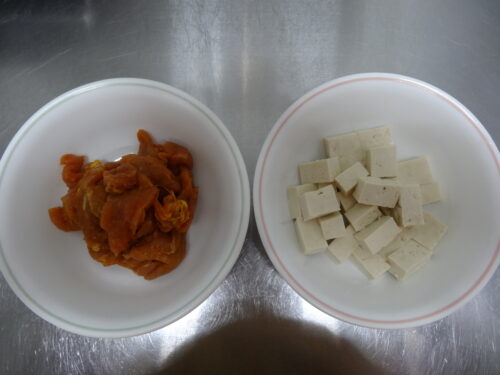
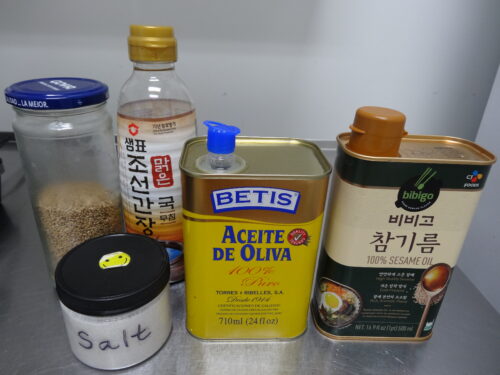
Ingredients
- Korean soy sauce
- salt, a few pinches
- Olive oil
- Sesame oil
- Sesame seeds
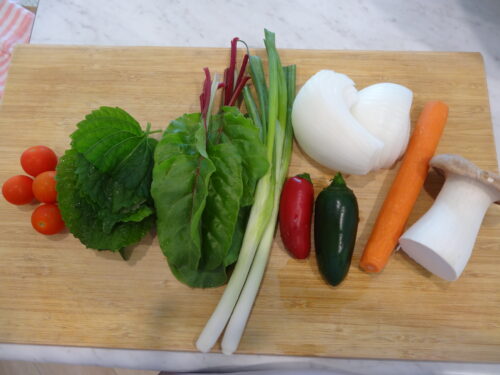
- Today,I will use a few fresh perilla leaves, 8 beet leaves, and 4 cherry tomatoes picked from the garden. I will chop them up and eat them raw.
- Onion 1/2, carrot 1, shiitake mushroom 1/2, red jalapeno 1, green jalapeno 1. I will slice these and stir-fry them.
- I chop 2 green onions into small pieces.
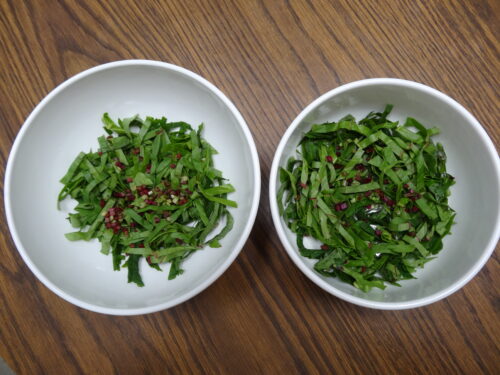
- Thinly slice fresh vegetables (perilla leaves, beet leaves, and green onions) and place them in a bowl. Add 1/2 teaspoon of Korean soy sauce and mix well.
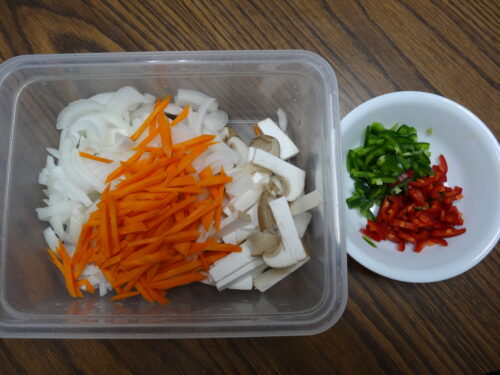
- Cut the onion, carrot, and mushrooms into appropriate sizes.
- When stir-frying vegetables, add the jalapenos at the end give them a quick toss. This will mellow the spiciness and soften them, resulting in a much smoother flavor.

- Sprinkle a little salt on the tofu and pan-fry it until golden and crispy.
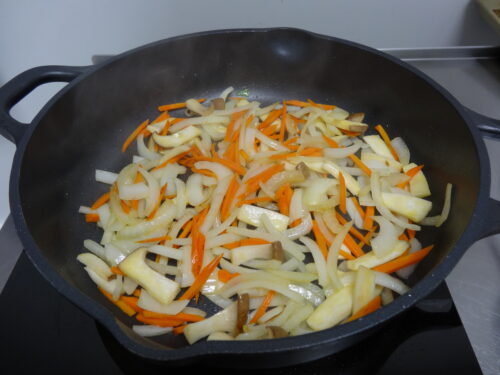
- After pan-frying the tofu, add onions, carrots, and mushrooms to the same pan. Sprinkle a few pinches of salt and stir-fry the vegetables thoroughly until they are well cooked.
- When stir-frying vegetables, you need to focus on cooking them over high heat to help them retain their moisture.
- When stir-frying vegetables, it's better to toss them occasionally, as if grilling, rather than stirring them repeatedly with a spatula. This results in better flavor.
- Place the stir-fried vegetables on top of the fresh vegetables.

- Cook the marinated meat over medium-low heat, grilling both sides evenly. Taste a piece of the meat once it's cooked, and if it's bland, add a little more Korean soy sauce before finishing the rest.
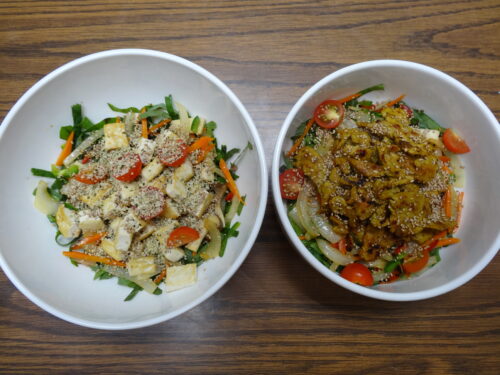
- In my bowl, place the fried tofu, and in my husband's bowl, add the pork bulgogi. Drizzle generously with sesame oil and sprinkle plenty of sesame seeds to finish.
- In my bowl, I added a little extra hemp seeds, which I like.
- Add the rice and mix it well. If the flavor lacking, you can add a little bit of Korean soy sauce.
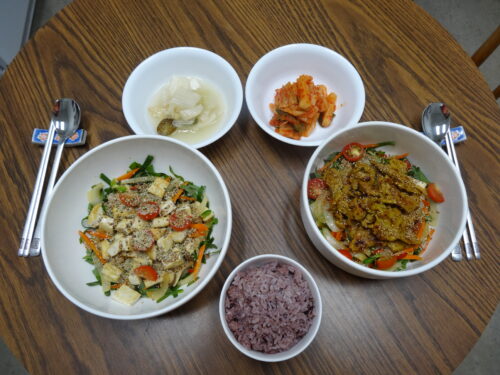
- I enjoy mixing rice with the other ingredients to eat, while my husband prefers combining just the vegetables and meat to creat a gourmet salad. He likes to eat the rice separately from the meat and vegetables.
- Compared to my husband, my portion sizes are much smaller. However, when it comes to bibimbap, I tend to eat more because I add plenty of my favorite vegetables. Lately, though, I've been having trouble digesting even after eating bibimbap. It seems that as I get older, eating too many vegetables, no matter how much I like them, leads to indigestion from excess fiber.
- Today, slightly less than enough, and that's just right.
This article offered a fresh perspective that I really appreciated!
The site’s simple design enhances the overall experience.
This was a very useful and well-researched article! I always find
helpful content on this site.